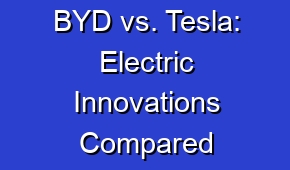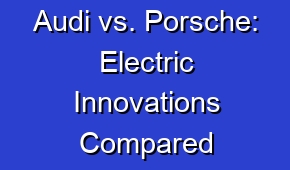Hybrids 101: Your Guide to Green Cars

Discover the world of hybrids with our comprehensive guide to going green. From understanding the basics to choosing the right model, we’ve got you covered. Get ready to unlock the potential of hybrid vehicles and reduce your carbon footprint.
Hybrids 101: Your Guide to Green is your comprehensive resource for understanding and embracing the world of eco-friendly vehicles. With the growing concern for the environment, it’s crucial to explore sustainable transportation options. Hybrid cars have gained immense popularity due to their ability to reduce emissions and save fuel. In this guide, you’ll discover the benefits of driving a hybrid, including improved fuel efficiency, reduced carbon footprint, and potential cost savings. We’ll delve into the technology behind hybrid vehicles, explaining how they combine an internal combustion engine with an electric motor to optimize performance. Additionally, we’ll provide a detailed overview of different hybrid models available in the market, helping you make an informed decision based on your needs and preferences. Whether you’re a car enthusiast or simply looking to make a positive impact on the environment, Hybrids 101: Your Guide to Green is your go-to resource for all things hybrid.
| Hybrids 101: Your Guide to Green |
| Hybrids are environmentally-friendly vehicles that combine an electric motor with a gasoline engine. |
| Hybrids offer improved fuel efficiency and lower emissions compared to traditional cars. |
| With a hybrid, you can save money on fuel and reduce your carbon footprint. |
| Hybrids use regenerative braking to charge their batteries while driving. |
| The battery pack in a hybrid can be recharged by plugging it into an electrical outlet. |
- A hybrid car combines the power of an electric motor and a gasoline engine.
- The electric motor in a hybrid provides extra power during acceleration.
- Hybrids automatically switch between the electric motor and gasoline engine for optimal efficiency.
- The gasoline engine in a hybrid charges the battery and provides power on longer trips.
- Hybrids are equipped with advanced technologies like regenerative braking and start-stop systems.
What are the benefits of driving a hybrid car?
Hybrid cars offer several benefits that make them a popular choice for environmentally conscious drivers. One of the main advantages is their improved fuel efficiency, which allows them to consume less gasoline compared to traditional gasoline-powered cars. This not only helps save money on fuel costs but also reduces carbon emissions and contributes to a greener environment. Additionally, hybrid cars often have lower maintenance costs and may qualify for certain tax incentives or rebates. Another benefit is their quieter operation, as hybrid cars use electric motors at low speeds, resulting in a smoother and more peaceful driving experience.
| Environmental Benefits | Cost Savings | Efficiency |
| Reduced emissions and air pollution | Lower fuel costs | Higher fuel efficiency |
| Less dependence on fossil fuels | Government incentives and tax credits | Regenerative braking system |
| Reduced noise pollution | Less maintenance and repair costs | Extended driving range |
How do hybrid cars work?
Hybrid cars combine an internal combustion engine with an electric motor to achieve improved fuel efficiency and reduced emissions. The electric motor is powered by a battery that is recharged through regenerative braking or by the internal combustion engine. During low-speed or stop-and-go driving, the electric motor powers the vehicle, while the internal combustion engine kicks in at higher speeds or when more power is needed. The two power sources work together seamlessly, providing optimal performance and efficiency. Some hybrid cars also feature plug-in capabilities, allowing the battery to be charged from an external power source for extended electric-only driving range.
- Hybrid cars combine a gasoline engine with an electric motor to provide power.
- The gasoline engine charges the battery and provides power to the wheels when needed.
- The electric motor assists the gasoline engine during acceleration and can also power the car at lower speeds.
Are hybrid cars more expensive than traditional cars?
Hybrid cars generally have a higher upfront cost compared to traditional gasoline-powered cars. This is mainly due to the advanced technology and components required for their hybrid systems. However, it’s important to consider the long-term savings on fuel costs and potential tax incentives or rebates that may offset the initial investment. Additionally, as hybrid technology continues to advance and become more widespread, the prices of hybrid cars are becoming more competitive with traditional cars.
- Hybrid cars typically have a higher upfront cost compared to traditional cars.
- Hybrid cars often come with more advanced technology and features, which contribute to their higher price.
- However, hybrid cars can be more cost-effective in the long run due to their higher fuel efficiency and lower maintenance costs.
- Government incentives and tax credits are often available for purchasing hybrid cars, which can help offset their higher price.
- The price difference between hybrid and traditional cars is gradually decreasing as hybrid technology becomes more mainstream and production costs decrease.
What is the difference between a hybrid car and an electric car?
Hybrid cars and electric cars are both considered environmentally friendly alternatives to traditional gasoline-powered vehicles, but they operate differently. Hybrid cars use a combination of an internal combustion engine and an electric motor, while electric cars rely solely on electricity stored in their batteries. This means that hybrid cars can run on both gasoline and electricity, offering greater flexibility and range, while electric cars need to be recharged from an external power source. Additionally, hybrid cars typically have a smaller battery capacity compared to electric cars, which limits their electric-only driving range.
| Hybrid Car | Electric Car |
| Uses both a gasoline engine and an electric motor for propulsion. | Powered solely by an electric motor and relies on rechargeable batteries. |
| Can switch between gasoline and electric power, providing flexibility and longer driving range. | Has a limited range based on the battery capacity, typically shorter than a hybrid car. |
| Regenerative braking system helps to recharge the battery while decelerating or braking. | Requires recharging from an external power source, such as a charging station or home outlet. |
How do I maintain a hybrid car?
Maintaining a hybrid car is similar to maintaining a traditional gasoline-powered car, with a few additional considerations. Regular maintenance tasks such as oil changes, tire rotations, and brake inspections are still necessary. However, it’s important to follow the manufacturer’s guidelines for servicing the hybrid system components, such as the battery and electric motor. These components may require periodic inspections or replacements, depending on the specific model. Additionally, keeping the tires properly inflated, practicing smooth driving habits, and avoiding excessive idling can help maximize fuel efficiency and prolong the lifespan of the hybrid system.
To maintain a hybrid car, regular servicing, monitoring battery health, optimizing fuel efficiency, and following manufacturer guidelines are important.
Are hybrid cars good for long-distance driving?
Hybrid cars can be suitable for long-distance driving, especially if they have a larger fuel tank or offer plug-in capabilities for extended electric range. The combination of an internal combustion engine and an electric motor allows hybrid cars to provide sufficient power and range for long trips. However, it’s important to plan ahead and consider available charging stations or refueling options along the route, especially when relying on electric power. Additionally, driving habits and conditions can affect fuel efficiency, so adopting fuel-saving techniques such as maintaining a steady speed and avoiding rapid acceleration or braking can help optimize the hybrid car’s performance during long-distance drives.
Hybrid cars are suitable for long-distance driving due to their fuel efficiency and ability to switch between electric and gasoline power.
What are the different types of hybrid cars available?
Hybrid cars come in various types, each with its own characteristics and features. The most common types include parallel hybrids, series hybrids, and plug-in hybrids. Parallel hybrids use both the internal combustion engine and the electric motor to power the vehicle simultaneously. Series hybrids, on the other hand, primarily rely on the electric motor to drive the wheels, while the internal combustion engine acts as a generator to recharge the battery. Plug-in hybrids have larger battery capacities and can be charged from an external power source, allowing for extended electric-only driving range. Additionally, there are mild hybrids that use the electric motor to assist the engine but cannot run solely on electric power.
Parallel Hybrid Cars
Parallel hybrid cars are the most common type of hybrid vehicles. They have both an internal combustion engine (ICE) and an electric motor. The ICE and the electric motor can work together or separately to power the vehicle. In parallel hybrid cars, the electric motor assists the ICE during acceleration and helps reduce fuel consumption.
Parallel hybrid cars also have regenerative braking, which means that the electric motor acts as a generator to recharge the battery when the brakes are applied. This helps improve fuel efficiency and reduces emissions.
Series Hybrid Cars
Series hybrid cars are different from parallel hybrids in terms of how the powertrain is configured. In series hybrid cars, the electric motor is the primary source of propulsion, while the ICE acts as a generator to charge the battery.
The ICE in series hybrid cars does not directly drive the wheels. Instead, it powers the electric motor, which then drives the wheels. This setup allows for more efficient operation, as the ICE can operate at its optimal speed to generate electricity.
Plug-in Hybrid Cars
Plug-in hybrid cars, also known as PHEVs, are similar to parallel hybrids but with a larger battery pack that can be recharged by plugging into an external power source. This allows for longer all-electric driving range compared to regular parallel hybrids.
Plug-in hybrid cars can be charged from a standard electrical outlet or from dedicated charging stations. They offer the flexibility of running on electricity for shorter commutes and using the gasoline engine for longer trips, making them a popular choice for those who want the benefits of electric driving without range anxiety.




















